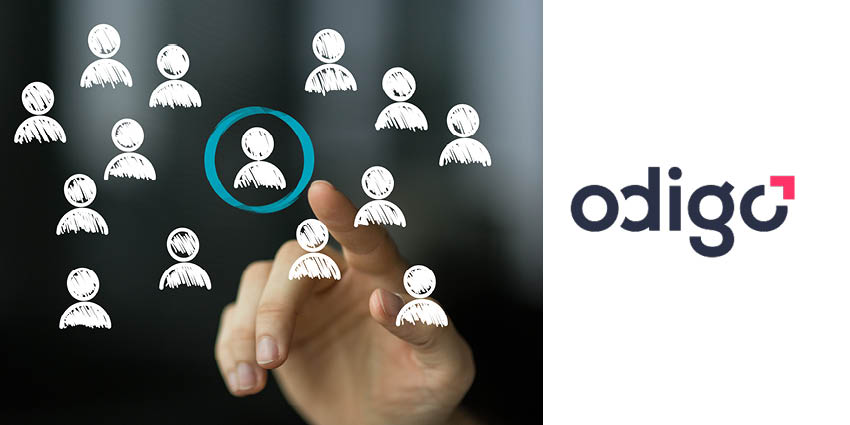Competition is advancing, and customer expectations are evolving. For many, such a reality is a significant cause for concern. Yet, the increasing ease of access to customer insights enables data-driven decision-making, paving the way for companies to use CX as a competitive advantage.
Analyst studies support such a strategy, with a 2021 Forrester Research study finding that the revenues of experience driven businesses grew 1.7 times faster than other companies. In 2018, this figure was lower at 1.4.
Interestingly, the research also suggests that experience driven businesses will prioritise investments in cross-channel experience design, data integration/management, and personalisation.
Regarding the latter, Andy Watts, a Senior Accounts Director at Odigo, senses a change in the approach of leading CX innovators. He says:
“Many businesses are no longer thinking of personalisation from the perspective of tactical segmentation. Instead, they are taking it to a more granular level, connecting disparate systems, third-party data, and AI technologies to understand the preferences and behaviours of specific customers. In doing so, they can make real-time insight-driven decisions around the individual.”
Such a level of CX maturity is a distant dream for many. After all, creating a data lake, enhancing customer intelligence, and providing relevant, valued experiences is no picnic in the park.
Yet, if a company can reach this point, they may make behavioural recommendations, optimise omnichannel strategies, and engage in predictive personalisation that reimagines CX and inspires deeper customer relationships.
Delivering Personalisation Across the Customer Journey
Personalisation drives better customer outcomes across many stages of the customer journey.
For starters, consider the browsing stage of an online customer journey alone. Harnessing the power of customer data, businesses can add personalisation through the use of:
- Unique landing pages – Combining data such as the customer’s location, the website they are bouncing from, and previous web page visits, companies can present a unique landing page to the customer.
- Recommendation engines – Identifying the needs and desires of customers – based on previous purchases, website searches, and demographic data – helps present relevant product and service recommendations.
- Relevant pricing and offers – Using algorithms that assess a customer’s purchase history, searches, and pages viewed, companies can target individuals with special promotions and discounts to enhance their value.
To take this strategy to the next level, consider the addition of a focused virtual assistant. Such a bot can reach out to customers with a proactive offer when a customer revisits a particular product’s web or social media page, for instance. Doing so may increase the chances of conversion.
Yet, companies can get more creative. Watts pinpoints the Domino’s Pizza bot as a particularly innovative and extremely simple example. He says: “When you’ve finished your order, a bot appears on the screen providing real-time updates of the pizza being made, being cooked, and then out for delivery, tracking the entire process and engaging people through automated, relevant updates.
Bots may also enhance service touchpoints within a customer journey. Automatically retrieving customer data from various enterprise systems, the technology can deliver a personalised service that offers real-time answers to specific queries and concerns.
Other AI-driven technologies also increase personalisation in the contact centre. A prominent example is predictive routing, which harnesses customer and agent data to pass customers through to the person best equipped to meet their individual needs.
Elsewhere within the customer journey, companies can exploit the power of customer data to mechanise digital form filling, automate proactive product notifications, and supercharge loyalty programmes and re-engagement.
Watts worked on a successful data-fuelled loyalty programme for a leading UK supermarket chain that showcases the power of personalisation. Sharing his experiences, he says:
“The tier 1 grocer aimed to drive personalization in their brick-and-mortar stores, which was difficult as it is easy for customers to slip under the radar. But, by enhancing their check out machines to make sense of real-time data, they could provide coupons relevant to the goods that the customer has just purchased, encouraging customers to come back again.”
While many businesses use apps for personalisation and to reengage customers with their physical stores, this is an excellent example of personalising the experiences of a customer base that is perhaps a little less digitally connected than most.
However, apps often work well. Consider Starbucks as a final example. According to Deloitte, the company has kickstarted a “Digital Flywheel” strategy through its app. The strategy: “Uses a data-driven AI algorithm to send over 400,000 variants of hyper-personalized messages (food/ beverage offers) to their customers, and promote unique and compelling offers for each specific member.”
Such an advanced approach to personalisation hinges on a data environment that centralizes context customer data, alongside insights into preferences, activity, and purchase history.
Creating the Necessary Data Environment for Personalisation
“At an enterprise standpoint, by pulling disparate data sources into a single environment that can be actioned in real-time, companies can create a system that drives the best behaviours,” says Watts.
Odigo, the advanced CX software provider that provides market-leading consulting services, has a track record of supporting companies to achieve precisely that.
In doing so, the vendor enables companies to maximise the value of additions to the technology stack and bring exciting personalisation use cases across the customer journey to life.
Discover more and get started with creating a data-fuelled personalisation strategy by reaching out to a member of Odigo’s expert team.







